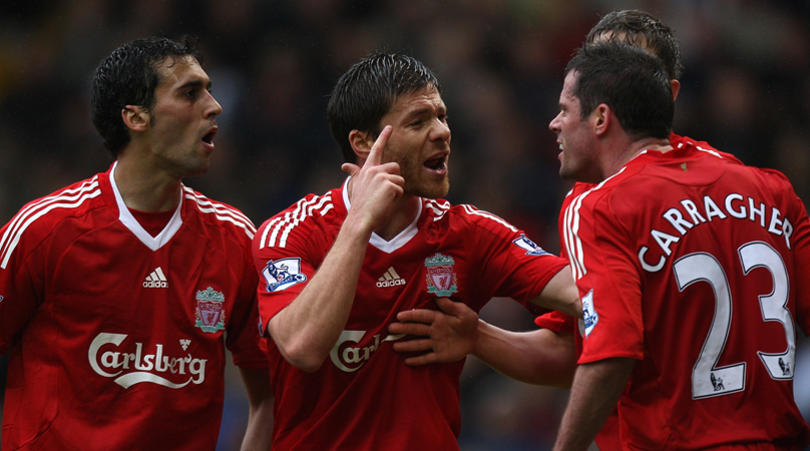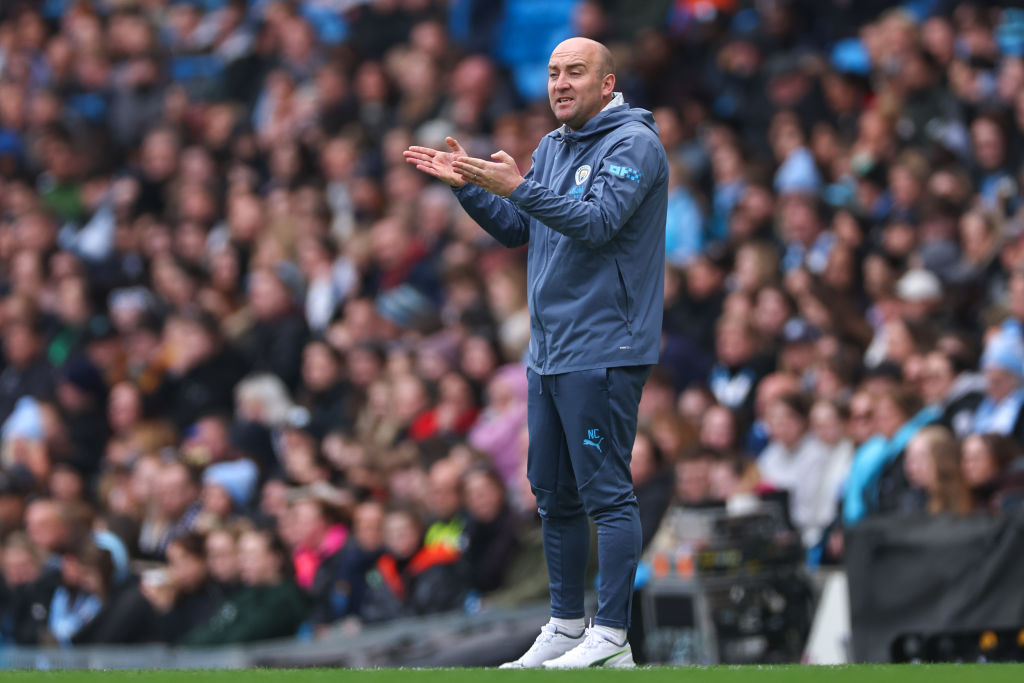Rebuilding Chapecoense: The inside story of a broken club's impossible repair
On November 28, 2016 a plane carrying Brazilian team Chapecoense crashed, killing 71 of the 77 passengers on board. Today, they're fifth in Brazil's Serie A after five games of the new season. FFT talks to those attempting to heal the club and local community
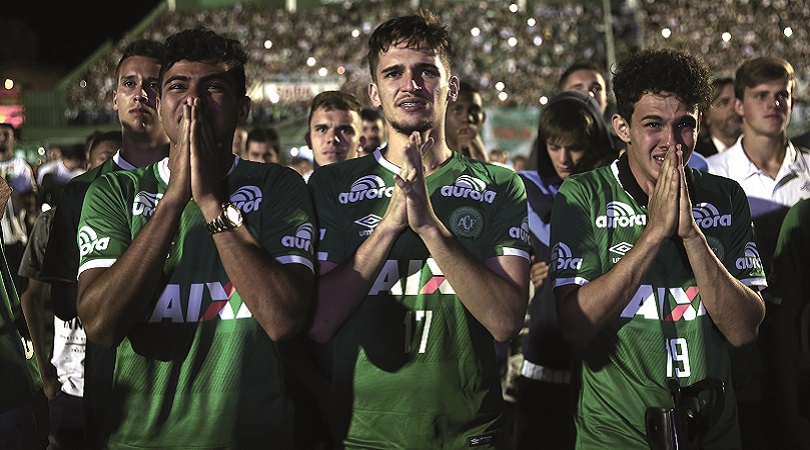
The telephone first started ringing at 4am. It was Osmar Machado’s 66th birthday. At first, he ignored the sound: he thought it was just a friend playing a prank, as he had done in previous years. However, as the calls persisted he finally, and wearily, reached out for the receiver. It was just after dawn had broken in Porto Alegre, deep in the south of Brazil.
“Any news on your son yet?” an old acquaintance asked the shoe salesman, without mentioning Osmar’s age. “How would I know?” he replied. “The team travelled to Colombia last night. The match is tomorrow. Why do you ask?”
An ominous silence followed, and Osmar realised that something was gravely wrong. He hung up, rushed to the television and turned on the news. He wouldn’t move for several hours.
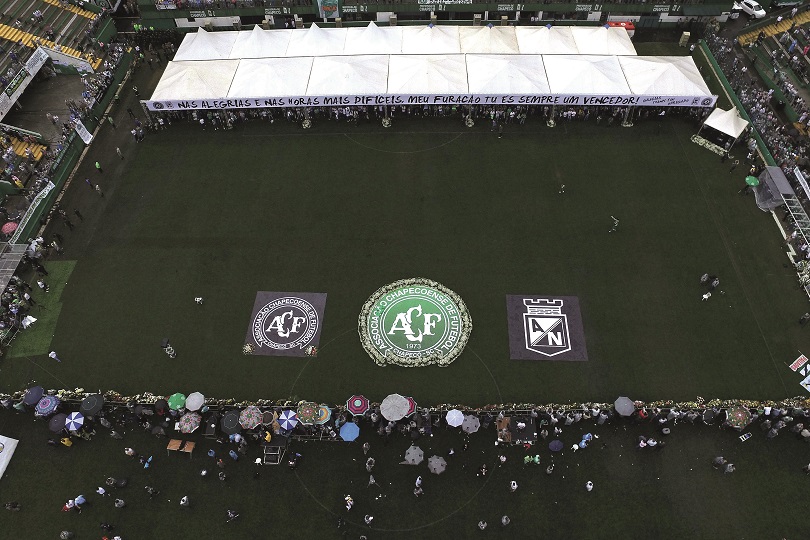
Dark day for football
As details emerged, it became apparent that it had all been completely avoidable, and was the result of truly irresponsible cost-cutting
What had unfolded has now been well documented as one of the sorriest disasters in football history. A BAe 146 regional airliner, operated by a little-known Bolivian charter company called LaMia, had run out of fuel and crashed into a hillside outside the Colombian city of Medellin. The plane had been carrying four crew members and 73 passengers, including almost everyone associated with Brazilian club Chapecoense: players, coaches, staff, directors – as well as 20 journalists and commentators covering the team.
The side had been en route to the first leg of the final of the Copa Sudamericana, South America’s second most prestigious continental trophy, and the most important game in Chape’s history. The plane went down just 10 miles from their intended destination, Jose Maria Cordova airport. There were just six survivors, including three players.
Grief and shock were soon followed by anger. As details emerged, it became apparent that it had all been completely avoidable, and was the result of truly irresponsible cost-cutting.
Get FourFourTwo Newsletter
The best features, fun and footballing quizzes, straight to your inbox every week.
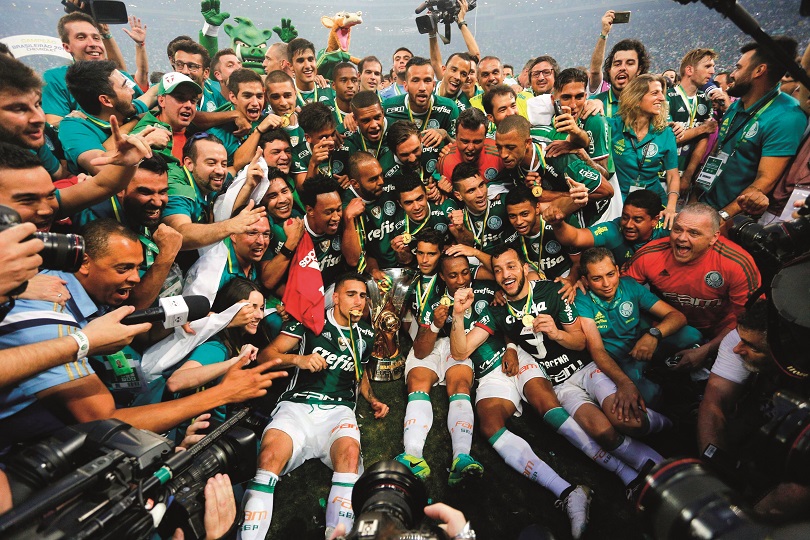
Chapecoense had started their fateful trip from Sao Paulo, where an XI packed with reserves had lost to Palmeiras, the new Brazilian champions. Nobody in Chapeco, a city of 200,000 residents in the state of Santa Catarina, was at all bothered about that result. What excited them was the next fixture – a real shot at underdog glory. This was a club that had been expected to end the season in a relegation dogfight, rather than tussling for a major trophy with the famous Colombian outfit, Atletico Nacional.
Rather than jetting direct from the south of Brazil to the north of Colombia, the relatively small aircraft made a brief stop at Bolivia’s Santa Cruz de la Sierra airport. Club directors were more than happy with the arrangements. After all, the Argentina squad - Lionel Messi included – had flown home after a World Cup qualifier on the same plane just 18 days earlier. And Chapecoense had flown to Colombia to face Junior Barranquilla in the last eight of the Copa Sudamericana.
Tragedy strikes
Seconds after all the lights went off, and passengers began to feel uneasy, the plane collided with some trees on the Cerro Gordo hillside
But this time, they weren't safe. Minutes before the plane reached its final destination in Medellin, the jet simply had no gas in the tank. The pilot and airline owner had left Bolivia with far less aviation fuel than recommended by authorities – and they had done it in order to save money, investigations would later reveal.
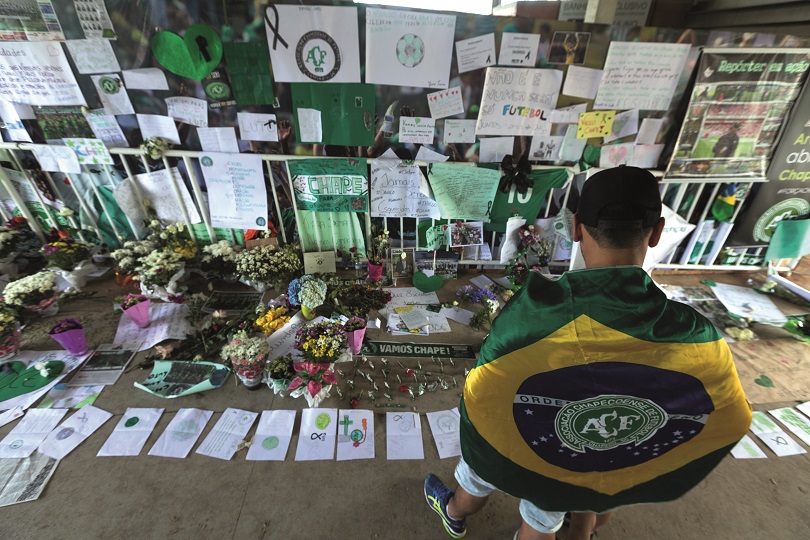
Seconds after all the lights went off, and passengers began to feel uneasy, the plane collided with some trees on the Cerro Gordo hillside at 250 kilometres per hour. It then slid downwards for 400 metres. The survivors, after crawling from the wreckage, stood in the rain for hours, in the middle of the night, until being rescued.
The tragedy put Chapecoense – widely toasted in their homeland as a sort of Brazilian Leicester, such was the romance of their recent history – back in the headlines, but for the worst reasons. They joined an all-too-long list of teams decimated by air crashes: Torino (1949), Manchester United (1958), Alianza Lima (1987) and Zambia (1993).
Osmar’s son Filipe Machado, a 32-year-old central defender who had signed for the club in May, was named among the 71 deceased. After the initial shock, his father decided there was only one thing he could do: drive 280 miles north-west to Chape’s 20,000-seater Arena Conda, not far from the border with Argentina.
His son’s family had settled in quiet, rural and religious Chapeco after a lifetime of living in various hotels in disparate corners of the football globe, such as Iran, the United Arab Emirates, Bulgaria and Azerbaijan.
Filipe was happy there, but still ambitious. He dreamed of playing for a bigger club, and saw winning the Copa as the ideal way to get himself into the shop window. Osmar hoped his son would get a chance to play for one of the big two of Porto Alegre – Internacional or Gremio. All he had to do was to win that final, and put in an excellent performance.
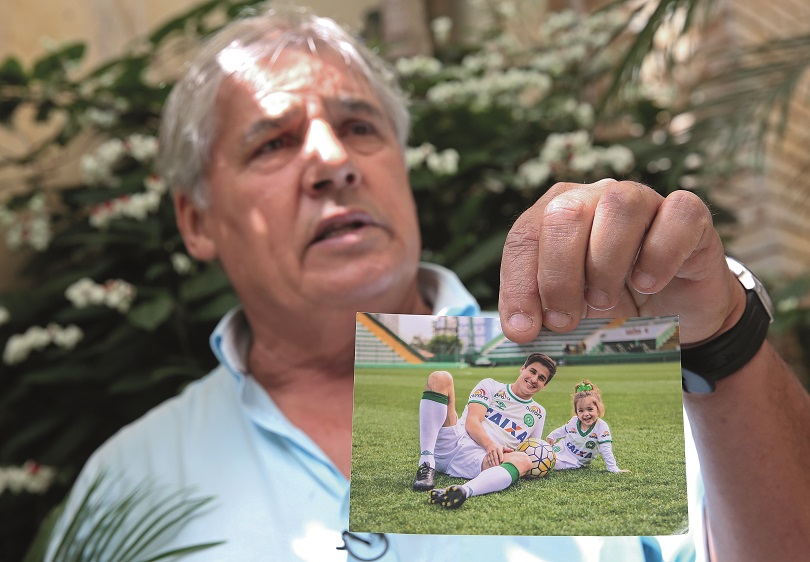
Grief stricken
As the grieving father approached Chapeco, he considered taking his own life by smashing his car into a lamppost
As Osmar travelled to Chapecoense’s hometown, he listened to the country songs that Filipe, and most Brazilian footballers, tend to love. He also went back through the numerous voice messages his boy had sent him via WhatsApp. “Being a footballer is great but it’s a lonely life, Dad,” one said. “Travelling is not as exciting when you are doing it all the time and are far away from your loved ones.”
As the grieving father approached Chapeco, he considered taking his own life by smashing his car into a lamppost. The only thing that stopped him was the string of messages of love and support from his many friends and family.
“I had to pull over at the side of the road to cry every 10 kilometres or so,” Osmar told FourFourTwo a month after the tragedy. “But that was for the best. My son was also my greatest friend and I wanted to keep thinking of him, cherishing his memory. I was a lot calmer, and out of tears, by the time I arrived in Chapeco. I am alive now because I had that time alone.”
He soon realised that he was not alone in his sorrow. In fact, he started to sense that Chapecoense – his son included – would be mourned across the planet. He wasn’t wrong. Hours after the crash, homages started pouring in. Neymar, Messi and Cristiano Ronaldo all paid heartfelt tributes. Then came NBA stars, Pope Francis and members of Guns N’ Roses. They grieved for Chapecoense, a team largely unknown, even in Brazil, a decade ago.
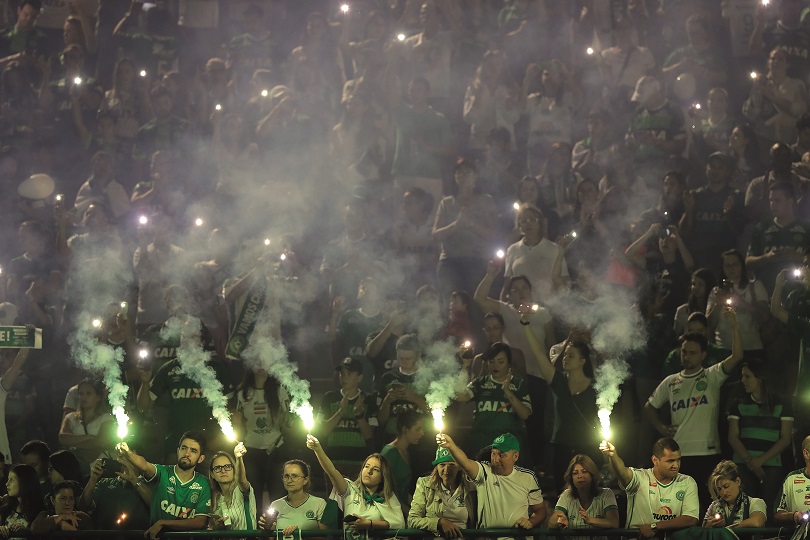
The Brazilian Football Confederation postponed the domestic cup final that was scheduled for the following day, and did the same for the last round of league matches. All over the country, players went back home to weep for friends that were now lost, while others were reflecting on the feeling that it could easily have been them.
One of most shaken was midfielder Camilo Farias, Botafogo’s No.10. He had played for two years at Chapecoense, leaving for Saudi Arabia’s Al-Shabab FC a few months into 2016. “I didn’t adapt there, and I was bound to come back to Chape,” the 30-year-old said later. “Every player on that flight was a friend of mine. It is a very strange feeling. A mix of sadness, of relief for not being on the flight, and of guilt for leaving that place in the team for someone else that died.”
"We lost a pillar of society"
In Medellin, instead of the first leg of the final, there was a memorial, attended by 50,000 local supporters
Farias and millions more in Brazil were watching on TV when a tired Osmar and other family members of the 19 players that perished were welcomed by mourning fans at Chapecoense’s stadium. What Machado remembers the most about that November day was the eerie silence across the entire city. “If you heard anyone in Chapeco, it was either a family member or a fan in grief,” he said.
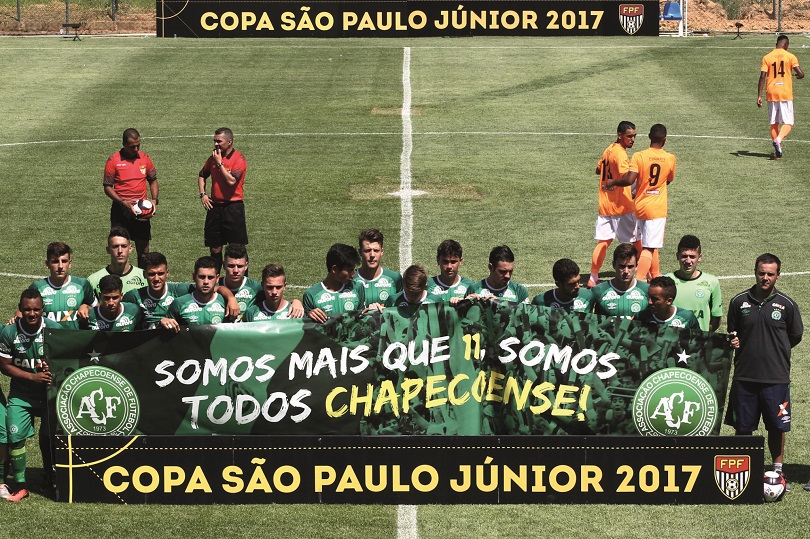
In Medellin, instead of the first leg of the final, there was a memorial, attended by 50,000 local supporters. They looked nearly as distraught as the people of Chapeco. “This title belongs to Chapecoense and we will be happy as runner-ups,” Atletico Nacional’s coach Reinaldo Rueda conceded. “They arrived with a dream. They will leave as legends.” The Brazilians soon got the message and – in tears – 20,000 fans celebrated the posthumous title inside the Arena Conda.
Osmar was on the pitch, at Chape’s tribute, when the news of the title ‘win’ filtered through. Celebrating a victory in the middle of a heartfelt memorial service was deeply surreal. “The trophy was supposed to be my birthday present, but it all felt a little out of place,” he says. “I guess that the city needed something to cling to in the middle of the tragedy. But there was nothing to celebrate, for me. My son promised we would drink for weeks if Chape won the final. There was no game and I had to settle for his casket, with his body in pieces.”
However, the Mayor of Chapeco, Luciano Buligon, felt that the Copa Sudamericana title was a way to help heal his hometown’s heartbreak. A hardcore Chape supporter, he was expected to be on the flight – only for city hall affairs to keep him in Sao Paulo for an additional day. Since the crash, he has lost much sleep thinking of his lost colleagues, which included the club chairman Sandro Pallaoro, one of those key to their amazing rise from the fourth tier to the top.
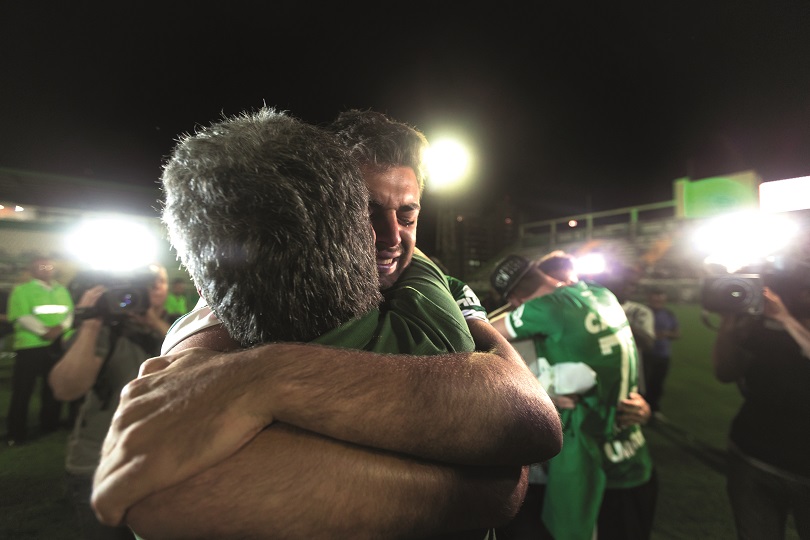
“Our Sundays were about three things: family, going to church and Chapecoense,” says Buligon. “We lost a pillar of the society of Chapeco, at least for now. We cancelled all the festivities planned for Christmas and it has been hard to get the city back on track. The wounds are still very open. Of course there will be new players. Life will bring other issues and people will move on. But our people had their dream stolen in a tragic way, just before it could have come true. That is now gone forever.”
Unknown future
Some fans laud the victims, and the three surviving players, as heroes who took a small club to an international final, but they also worry about their future
Buligon, who has started to wear Atletico Nacional shirts regularly to thank them for all of the support he received in Colombia, is remaining admirably optimistic, however. “Nacional gave us a lesson of empathy,” he says. “Chape and Chapeco are getting a lot of that now. We are finally on the map, not only because of the tragedy but also because of the all the positivity that is around here now. We will live on, and do even better soon.”
Some Chapecoense fans do not share this outlook, though. Many believe their one shot at glory has passed. They laud the victims, and the three surviving players, as heroes who took a small club to a first international final in 43 years. But they also worry about their future.
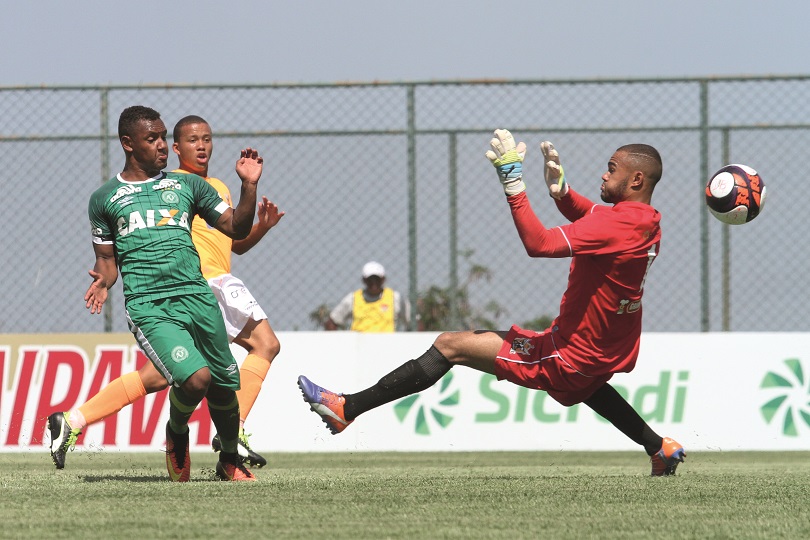
“Hours after the accident I flew in a Chape shirt to work in Panama,” says Chapeco-born journalist Piero Locatelli. “The team made my bond with my hometown much stronger than before. But I lost a cousin and my father lost many of his friends. It is very hard to find the strength to rebuild when you’re looking at scorched earth.”
Locatelli, like all of Chape’s supporters, lost their favourite players from the club’s short history. There was goalscorer Bruno Rangel, captain and midfielder Cleber Santana, brilliant goalkeeper Danilo and – known to all for his heart and leadership – Osmar’s son Filipe. “These players really related to the community where they played,” says Locatelli. “The new players who will replace them need to know how to blend in, if they are going to do as well. But just imagine the pressure they will feel, and the size of the shoes they will have to fill.”
The challenges to Chape will be manifold in 2017, way beyond just rebuilding a team. The generous decision by Atletico Nacional to cede them the Copa Sudamericana trophy did more than just increase shirt sales for a Colombian club in a Brazilian city 7,000km away. It also put a decimated outfit into the prestigious Copa Libertadores for the first time. The team will also have to regroup and try to stay in the Brazilian top flight.
Fundraising games against Barcelona and other sides should help. In August, too, there is the two-legged final of the Recopa Sudamericana against Nacional (who won the Copa Libertadores). “I don’t know if I will have a heart to watch that,” admits Osmar.
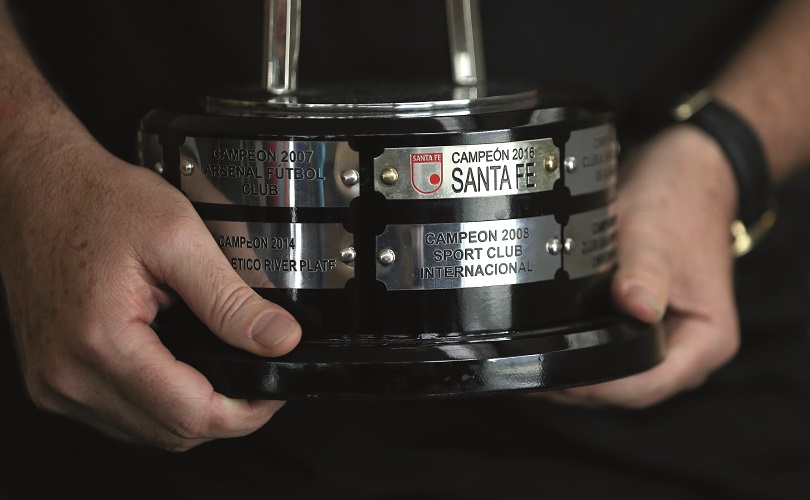
Work to be done
Maninho had sponsored the construction of the stadium, paid players out of his own pocket and offered executives from his meat business to help run the club
But since the rainy day when 50 caskets lined up inside the Arena Conda, one man has worked non stop to help Chapecoense’s flag fly high once again. New chairman and club co-founder Plinio David de Nes Filho, known better as Maninho, was the obvious candidate to start the reconstruction. A wealthy local businessman, he’d already believed in Chape when no one else would.
Maninho was the most generous backer of the ‘Big Green’ back when it was threatened by liquidation a decade ago. He had sponsored the construction of the stadium, paid players out of his own pocket and offered executives from his meat business to help run the club.
Maninho was initially cited as one of the dead, but – like the city mayor – had stayed in Sao Paulo. He heard about the tragedy on his way to the airport. “In the heat of the moment all you think about is how to solve problems,” he says now.
“It only sank in when I had to walk into the boardroom and saw the empty chairs of my lifelong friends who helped build the club. Almost all are now gone. I’m over 70, and all I ever wanted to do was to watch on from the stands as a fan. But there is so much for me to do, that’s not going to happen.”
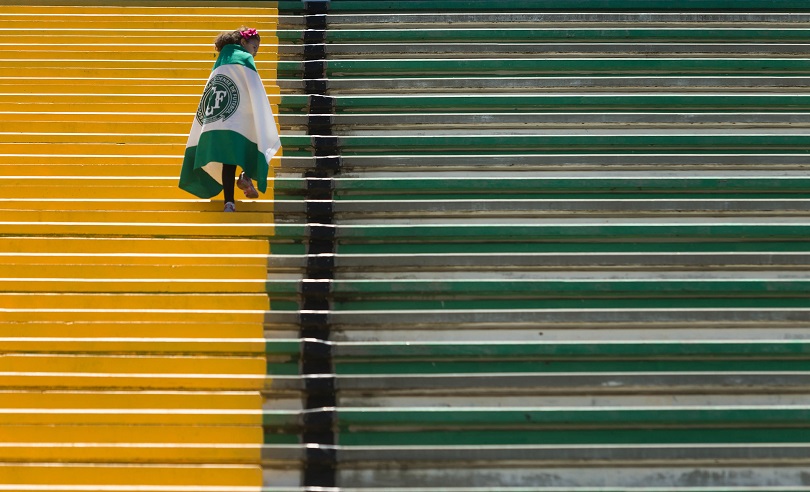
The rebuilding job is significant. The only Chapecoense staff left alive were six players, a goalkeeping coach, two physiotherapists, two locker room staff, a data analyst, a doctor, a part-time nurse and a handful of club directors who didn’t travel to Colombia.
Two playing survivors – defender Neto and winger Alan Ruschel – look likely to be able to return to a relatively normal life one day. Goalkeeper Jakson Follmann faces much sterner challenges after having part of his right leg amputated, and has since taken another job at the football club. The three shirt numbers - 89, 4 and 40 for Ruschel, Neto and Follmann respectively – will not be worn by any other players ever again.
Enter Mancini
Chapecoense instead went for someone humble, and more fitting their quiet image and ascent
The new chairman’s first major decision was to pick a replacement for Caio Junior, the much-lauded coach who had overseen the side’s incredible run to a continental final. He chose Vagner Mancini, regarded in Brazil as a Tony Pulis type: an experienced pro, most closely associated with teams trying to fend off relegation.
Many thought that Mancini’s best days were now behind him, but the appointment has been interpreted as a sign of Chape staying on its true course, rather than succumbing to the commotion that might have led to a high-profile appointment: Luiz Felipe Scolari, perhaps (born not far from Chapeco and seeking 7-1 redemption), or the former Real Madrid gaffer Vanderlei Luxemburgo.
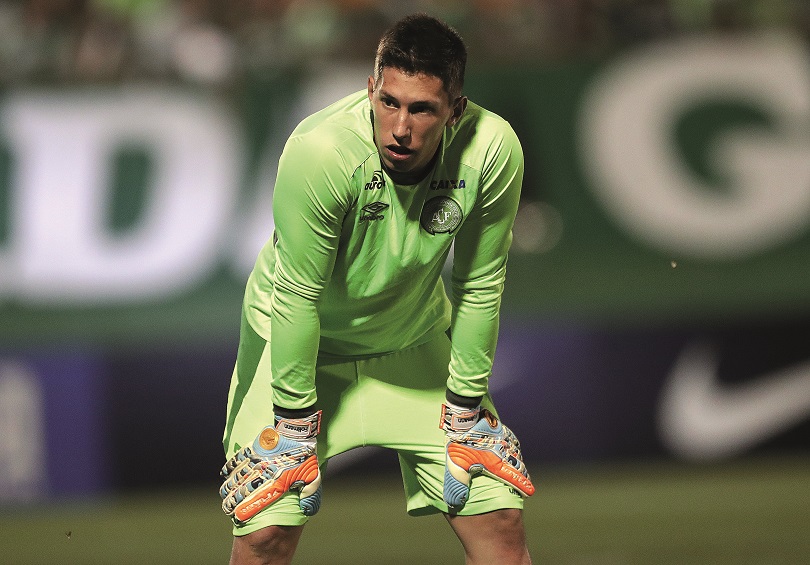
Chapecoense instead went for someone humble, and more fitting their quiet image and ascent. Mancini got the job over bosses who’d won top-flight trophies, including Fluminense’s Levir Culpi – who literally asked to be hired.
The conversations between Maninho and Mancini began just 10 days after the accident. The coach didn’t make any specific plea to take over, but the deal was still agreed and announced in the middle of December. Mancini was soon contacting players that he wanted to see wearing the green and white shirt come January. His aim was to bring in 20 players that were happy to live in the city and mix with the local people.
This is the way things are in Chapeco: he didn’t want to sign big-name players with blacked-out windows or security staff. The club data analyst, Victor Hugo, compiled a list of possible targets and rival clubs even offered up their players to assist with the reconstruction.
Mancini admitted that he was feeling very emotional about his latest managerial role. “Being chosen to be here for this did mean a great deal to me as a human being,” he says. “This goes so much beyond football. No coach in Brazilian football has ever faced a situation like this. The world is looking at us, but we are still a local team. To play here, we need men that understand what a tightly-knit community is about.”
No hand-outs
Mancini’s choice of assistant, Nivaldo Constante, is bound to stir some emotions
Mancini has some form at fairytale clubs. In 2005, he led tiny Paulista to a first Brazilian Cup. That year, which he spent living in Jundiai, a city of around 350,000 residents on the outskirts of Sao Paulo, is what he would love to recreate for the people of Chapeco.
“This is a very Catholic city – they cancelled the Christmas celebrations because they were still in mourning,” he says. “The very least we can do is to work very hard to give them something to cheer about again.”
The new coach also knows what it’s like to take a small outfit into the Copa Libertadores and he hopes his team light up the South American championship. And they won’t be looking for any special treatment, he countered, after Brazilian football executives discussed sparing the club from playing again so soon after the tragedy.
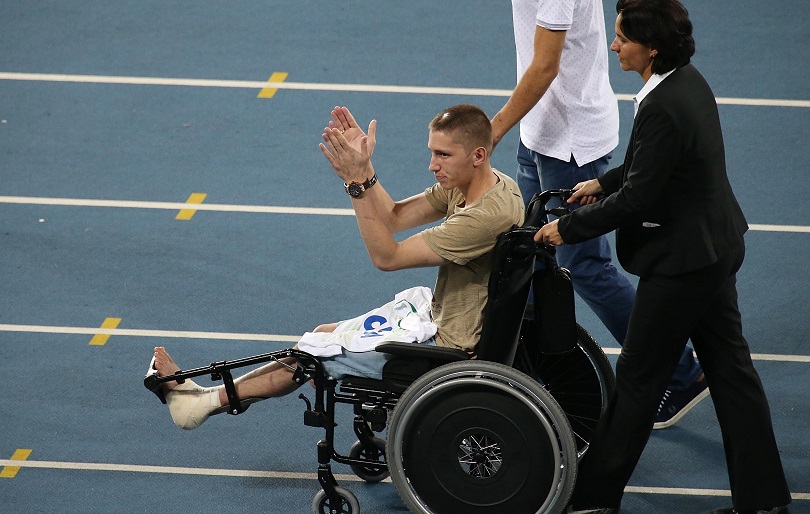
“We don’t want immunity to avoid relegation in any tournament that we play in,” he insists. “We want to play in the big matches all over the continent, and we want to deserve that. Chapecoense was never relegated, it only rose up and we want to stay as a top-flight team on merit.”
The club’s board was quick to concur with the coach. Despite all of the difficulties a just-assembled team might face, they would get back into training. Chapecoense would be ready for January, looking to defend their Santa Catarina state championship title.
Meanwhile, Mancini’s choice of assistant, Nivaldo Constante, is bound to stir some emotions. The 42-year-old former goalkeeper retired after playing 299 games for Chapecoense, and is essentially the only living football icon the club have remaining. His 300th game was scheduled to be after the team returned from Colombia, in the last round of the Brazilian championship against Atletico Mineiro at the Arena Conda.
“All three other goalies were my close friends,” he said. “And I even considered extending my contract for one more year, to be there for Follmann when he took over from Danilo. We all knew that Danilo, the goalkeeper that basically put us in the Copa Sudamericana final after an amazing last-minute save against San Lorenzo, was likely to leave after a fantastic campaign. Follmann really wanted me to stay on. He said he would carry me on his shoulders after game 300 at the Arena Conda, so this job is my attempt to stay involved.”
Long road to recovery
Ruschel, one of the playing staff’s three survivors, hopes that he can wear the Chape shirt again this season
The departed’s first replacements arrived on January 3, a month after the sombre mass funeral service took place on the Arena Conda pitch. As Maninho promised, there were no star names, despite many people expecting Ronaldinho or Kaka to roll up. The first to be unveiled was 27-year-old defender Douglas Grolli, who has played for Gremio and Cruzeiro. “Grolli was here when we started our rise in 2010,” Maninho said with tears in his eyes. “He was in Chapecoense’s academy and now he’s come back to continue what he’d already started with us.”
The player responded equally emotionally. Asked about who inspired him, Grolli replied, “I want to be rock solid like Filipe Machado.” On the other side of the TV screen in Porto Alegre, father Osmar wept again.
Midfielder Nadson and striker Rossi, who have experience playing for battling sides like Chape, arrived soon after. Many more have followed, some loaned for free by bigger Brazilian clubs. And the side that have assisted the club the most – champions Palmeiras – were the first to play the post-tragedy Chapecoense, in a friendly match on January 21.
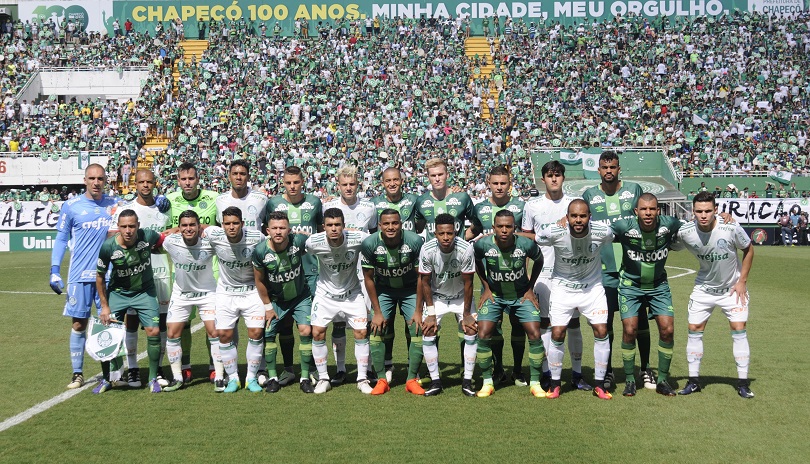
Ruschel, one of the playing staff’s three survivors, hopes that he can wear the Chape shirt again this season. That would be quite a story in itself. Ruschel spent a week inside a Colombian hospital suffering with a spinal injury and feared that he might lose the use of his legs. His recovery has been remarkable. He is now moving his limbs again and hopes to be back in training by the middle of 2017. His target is to be a professional again.
“I didn’t see any of the tributes to us,” he says. “At first, I thought that the game had happened and that I had lost consciousness for a moment. I was constantly asking people what the score was. But it slowly sunk in that I was still alive by a miracle, and that most of my team-mates were dead.”
Ruschel says he has seen defender Neto and goalkeeper Follmann only a few times as the trio go through their rehabilitation. One of the few things he remembers about the plane trip itself was deciding to sit next to Follmann. “That could have saved my life,” he says. “Cadu, one of the executives, asked to sit in the front, for some reason, and so I changed places with him. I hope to honour Cadu’s memory by doing the best I can to play for Chape again.”
Football as an escape
I just want to see all the new players joking around in our restaurant, playing cards down at the lobby and laughing with us all
Ruschel is the only one of the three likely to ever play again, and few people in the world can empathise with the giddy spectrum of emotions he is going through. A man who can, however, is former Manchester United goalkeeper Harry Gregg. He survived the 1958 Munich air disaster, which killed 23 people including eight players.
“When the story broke, I asked my wife if I could sit alone in the TV room – I didn’t want anyone with me,” Gregg told the Guardian. “I wanted to watch it, but with no family in the same room. I didn’t know what way to react. It’s difficult to describe.”
Gregg has some pointed advice for Ruschel and the six players who didn’t board the plane to Colombia: move on and play. “That was the best thing that happened to me and I think the other survivors; to get down to White City [where Man United used to train] and then kick the living s**t out of each other on the training field once more,” he said.
“It actually saved me. To argue, to fight, to train. It stopped me from going insane over what had happened to us out there on the Munich runway.” Ruschel agrees with Gregg’s assessment. “But until then,” the 27-year-old admits, “it will be tough to live.”
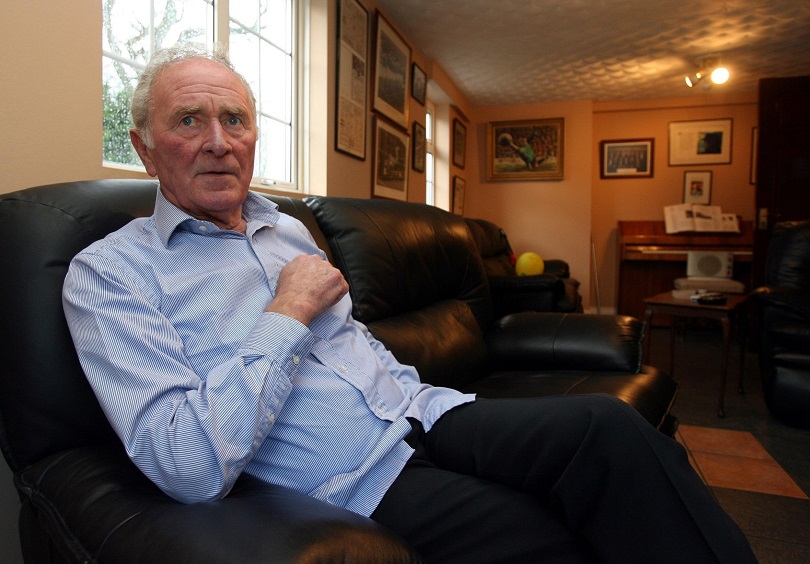
Back at Chapeco’s Hotel Bertaso, located just 1km south of Arena Conda, business is slowly getting back to normal. For many years, the Chapecoense teams would spend the night before games there, reserving the fifth floor.
The new squad will stay here, too. Receptionist Gelson Mangone, who was friends with many players, wants to look forward. “Our city needs to rise again, we’ve already suffered enough,” he said. “I just want to see all the new players joking around in our restaurant, playing cards down at the lobby and laughing with us all.”
Seventeen-year-old Matheus Pallaoro was a player for the Chapecoense youth team and son of the chairman Sandro, who died in the crash. He also sounds a hopeful note. “I think that the Arena Conda will be electric this season as soon as the team wins some matches,” he says. “Chapeco wants to carry Chapecoense forward with it. It will be really great to see that.”
Never the same again
But life cannot be the same for Matheus. “At home, things are quiet like never before,” he adds. “It’s as if our father could still come back. His absence has left a huge hole in our lives and Chape cannot fill that hole alone. My brother and sister don’t seem to care about the football any more and my mother is spending a lot of time in bed now. Chape and Chapeco, one way or another, will move on. But those who lost someone that day will never be the same again.”
Many members of Chape’s youth team will link up with the senior squad in 2017. Record numbers of hopefuls have been turning up at trials – proving many talents in the region aren’t thinking only about starting their careers with local giants Internacional or Gremio. “The young don’t have just two teams [to aim for] now,” Matheus explains.
Meanwhile in Porto Alegre, Osmar is thinking of driving to Chapeco again on the anniversary of that fateful telephone call. He started to consider the idea after a difficult holiday season, in which he lacked the energy to put on the Christmas party that Filipe had planned to arrange on his farm. Filipe’s widow and daughter are unsure if they ever want to go there again. But Osmar longs to return to a happier city than the one he’d driven to after the crash.
“My son will not come back, but if the new players do well, I will feel that Filipe was honoured,” he says. “I’d like to be at that stadium again, to believe that everyone there is positive about the future. I want to be celebrating my next birthday in a better fashion.”
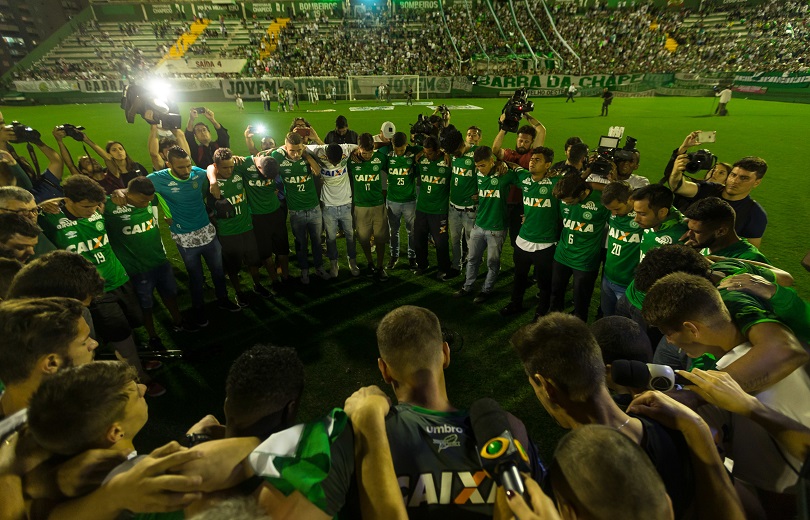
This feature originally appeared in the March 2017 issue of FourFourTwo. Subscribe!
